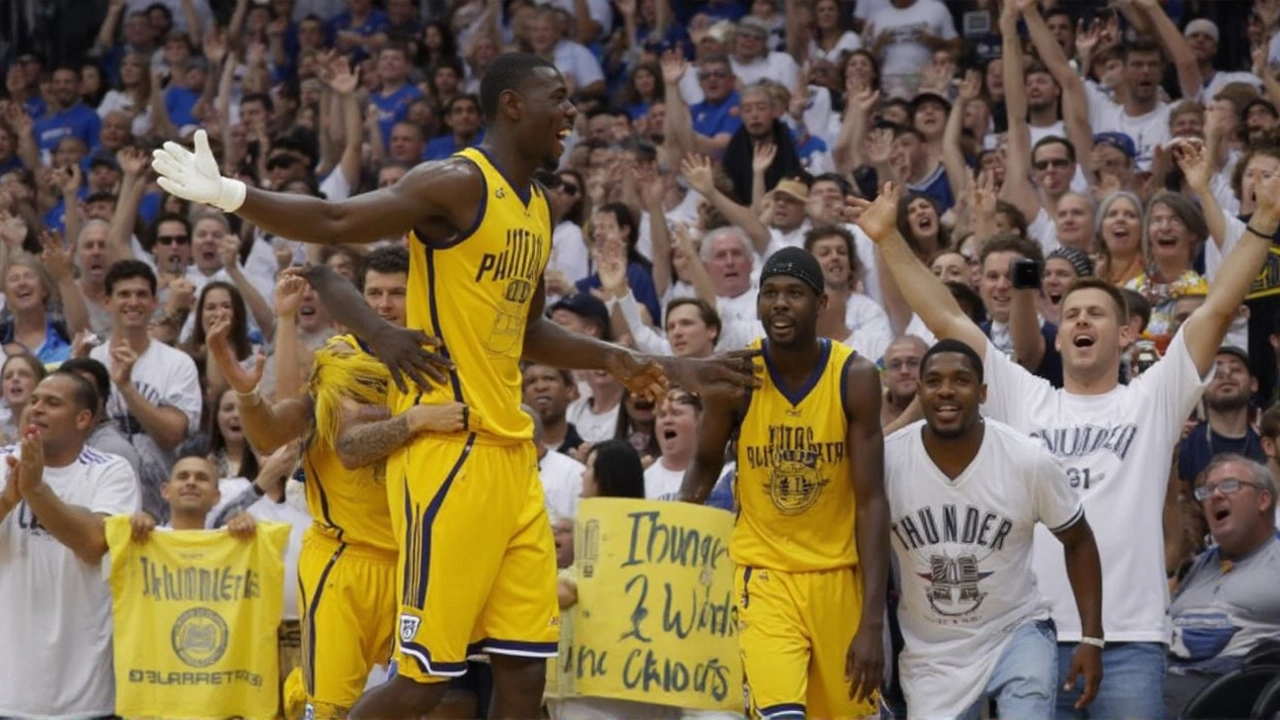A Chess Match in the 2025 NBA Finals: Thunder Dig Into Defensive Toolbox
Game 3 of the NBA Finals wasn’t just a battle of stars. It turned into a tactical slugfest, with the Oklahoma City Thunder going all-in on their stay-or-switch scheme to keep the Indiana Pacers’ offense from running wild. This wasn’t about trying to shut down one player—the whole idea was to disrupt Indiana’s speedy, sharp-passing, 119.8-rated playoff machine. Mark Daigneault, the Thunder’s head coach, didn’t hide his focus: contain Tyrese Haliburton’s brainy pick-and-roll action and keep Bennedict Mathurin from torching the scoreboard off the bench. Simple in theory, messy in practice.
The core of the plan centered on defenders reading the play—sometimes sticking to their man through screens, other times switching at just the right moment. Whenever Haliburton ran a pick-and-roll, the Thunder put heavy emphasis on going under the screen, coaxing him into shots from the mid-range, a spot the analytics crowd still considers less threatening. Nobody on the Thunder did this better than Jalen Williams, whose quick hands and long reach constantly poked at passing lanes, trying to disrupt Haliburton’s rhythm. The Thunder weren’t backing down on the inside either. Chet Holmgren lurked on the weak side, ready to protect the rim if any Pacer got a step.

Bench Scoring and Perimeter Surprises: Thunder’s Calculated Risks
Still, a plan on paper rarely survives first contact on the court. Bennedict Mathurin, coming off the Indiana bench, tore through gaps in defensive rotations for a massive 27 points. Indiana kept the ball moving fast—averaging 104.3 possessions a game is no joke. OKC found out the hard way that constant vigilance is tough to maintain at that speed. The Thunder also had to get creative with Myles Turner, Indiana’s big man who isn’t shy about launching from deep. Instead of always switching a smaller defender onto Turner, Daigneault adjusted: sometimes sticking with the original matchups to guard against corner threes, other times sending a longer defender his way when Turner popped to the arc. Every possession was a game of tug-of-war between discipline and improvisation.
Oklahoma City’s players were honest after the loss—they struggled to juggle Indiana’s non-stop movement with needing to score enough themselves to stay in the fight. The Thunder’s defensive scheme wasn’t a total bust, but those occasional slip-ups when switching against Mathurin or losing track of Indiana’s shooters flipped the script. Now, with Game 4 around the corner, OKC faces a new challenge: keep reshuffling defensive wrinkles, avoid getting burned in transition, and stay cool at the other end of the court. The chess match continues, but one thing's clear. The Thunder can’t survive on schemes alone—they need near-flawless execution to hold back Indiana’s relentless attack.
